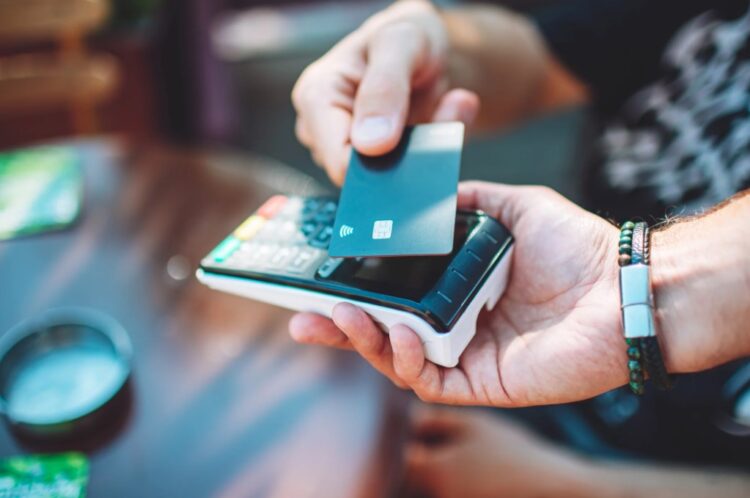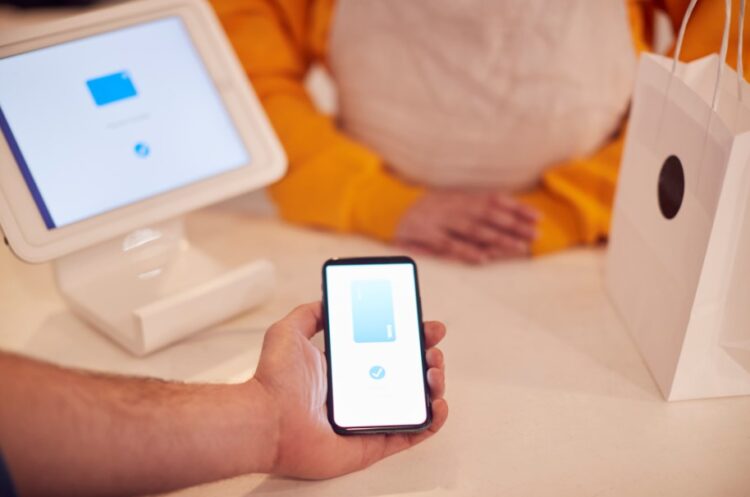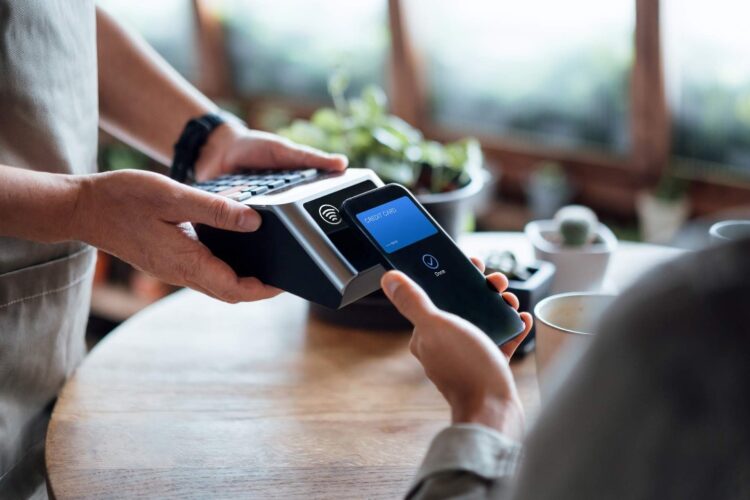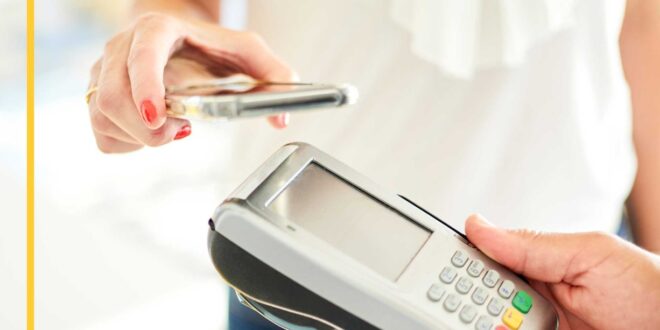In the era of digital transformation, contactless payments have emerged as a game-changer for businesses of all sizes. Offering a faster, more convenient, and secure way to transact, they cater to the modern consumer’s demand for efficiency.
For business owners, adapting to this technology means staying relevant and competitive in a fast-evolving marketplace. Not only does it enhance customer experience, but it also streamlines operations and reduces physical contact—a significant advantage in today’s health-conscious world.
For those looking to embrace this technology, exploring mobile card machine options can be the first step towards integrating contactless payment solutions in your business.
Understanding Contactless Payments
Contactless payments involve a method where transactions are completed with a simple tap of a card or a smart device over a payment terminal. These transactions use near-field communication (NFC) technology to exchange data between the payment device and the terminal.
With the rise of smartphones and wearable technology, the use of digital wallets like Apple Pay, Google Wallet, and Samsung Pay has also surged, offering even more convenience for consumers.
Is it possible to accept credit card payments over the phone?
Yes—this process is often referred to as MOTO payments (mail order/telephone order). It’s a type of card-not-present (CNP) transaction, meaning that the business manually enters the customer’s credit card information into the payment system, rather than having the customer present their card in person.
The Benefits for Your Business

Adopting contactless payments brings a multitude of benefits. Transactions are significantly faster than traditional chip-and-PIN or cash payments, reducing queue times and improving customer satisfaction.
This efficiency can lead to increased transaction volumes, boosting your sales. Moreover, contactless payments are highly secure, utilizing advanced encryption technology to protect transaction data, which can enhance trust in your brand.
How do I start using the contactless card?
The first time you use your contactless card for a transaction, you’ll be asked to use a chip and PIN or sign for your purchase. Once you’ve done that, all future transactions can be contactless. You need to hold your card very close to the reader (around 2 – 4 centimeters) for it to work. Let’s see how to set up it.
Setting Up Contactless Payment Systems
The transition to contactless payments involves several steps but can be streamlined with the right approach. First, you need to ensure that your point-of-sale (POS) system is equipped with NFC technology to accept contactless payments.
Upgrading your POS terminals may be necessary, and selecting the right equipment is crucial for seamless integration into your existing setup. Training your staff on how to use the new system and educating your customers about the benefits of contactless payments are also important for a smooth transition.
Risks and Considerations for Accepting Payments Over the Phone

When businesses take payments over the phone, they usually have to pay more in fees because these kinds of payments are seen as riskier and have a higher chance of fraud and mistakes. Since there’s no physical card to check, it’s easier for scammers to try and trick businesses.
Plus, keeping customers’ card info safe over the phone is tougher, and if businesses don’t follow the strict security rules (called PCI-DSS), they could get fined. Also, typing in card details by hand could lead to mistakes, making customers unhappy and causing more headaches.
So, if a business wants to accept phone payments, they really need to make sure they’re careful about security and train their team well to handle these risks.
Choosing the Right Payment Processor
Selecting a payment processor that supports contactless payments is a critical decision. You’ll want to look for providers that offer competitive transaction fees, reliable customer support, and robust security features.
Additionally, considering a processor that integrates with your existing business systems, like inventory management and accounting software, can further streamline your operations.
Security and Compliance
While contactless payments are inherently secure, maintaining compliance with industry standards is essential for protecting your business and your customers. Ensuring that your payment system adheres to the Payment Card Industry Data Security Standard (PCI DSS) is non-negotiable.
Regularly updating your systems and training your staff on security best practices can also mitigate risks associated with data breaches.
Marketing Your New Payment Option
Once you’ve implemented contactless payments, promoting this new capability can attract customers and enhance their shopping experience. Displaying signage that indicates the acceptance of contactless payments can encourage customers to use this option.
Additionally, incorporating information about the security and convenience of contactless payments into your marketing materials can educate your customers and potentially increase adoption.
Monitoring and Adapting
After introducing contactless payments, monitoring transaction data and customer feedback is crucial for identifying areas for improvement. This ongoing evaluation can help you refine your approach and adapt to changing customer preferences.
Staying informed about technological advancements and evolving consumer behavior will also ensure that your business remains competitive in the digital age.
Conclusion

Alright, so jumping into contactless payments is like unlocking a new level for your business, right? It’s pretty much the fast lane for shopping – customers just tap their card or phone, and boom, they’ve paid. This isn’t just cool; it’s super quick, which means people spend less time waiting around. And when folks are happy, they tend to buy more, which is a win-win for everyone.
But here’s the kicker, setting this up means picking the right gear that talks smoothly with your current system and making sure your team knows how to use it without turning it into a science project.
Plus, you have to keep an eye on all that customer card info because, let’s be real, the last thing you want is for that to get into the wrong hands. So, staying on top of security is key, and yeah, it sounds like a bit of homework, but it’s worth it.
Now, once you’ve got everything rolling, you should shout it from the rooftops. Let your customers know they can zip through payment without digging for cash or cards. It’s like telling them your checkout is now a superhighway, and who wouldn’t want to take that for a spin?
But here’s the thing, you gotta keep your ear to the ground, listening to what your customers are saying and keeping an eye on how things are running. Maybe they want something a bit different, or there’s a new gadget on the block that could make things even smoother. Being ready to tweak things here and there will keep you ahead of the game.
So, wrapping this up, jumping on the contactless payment train is pretty much a no-brainer. It’s faster, it’s cooler, and honestly, it’s what customers are starting to expect. Sure, there’s a bit of setup involved, and you’ve got to make sure you keep everything secure, but the payoff is huge.
We’re talking happier customers, smoother operations, and potentially more cash in the till at the end of the day. It’s the future, folks, and it’s pretty awesome.
 Hi Boox Popular Magazine 2024
Hi Boox Popular Magazine 2024



